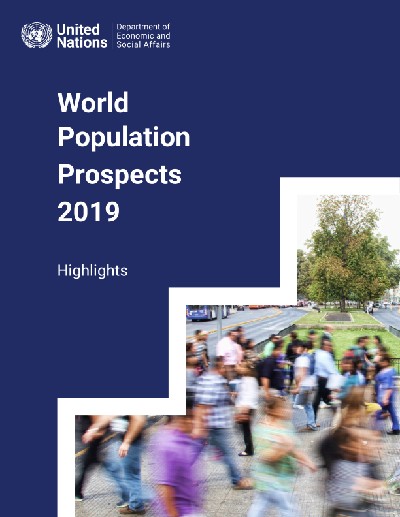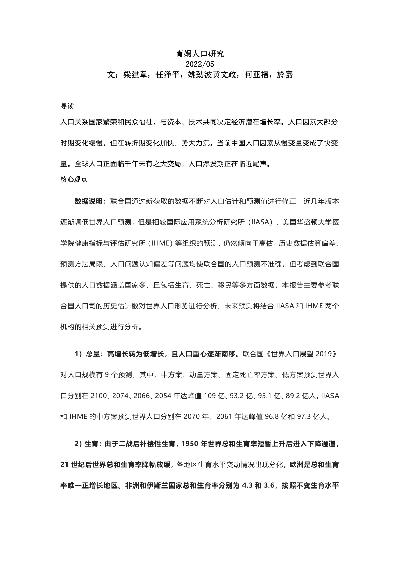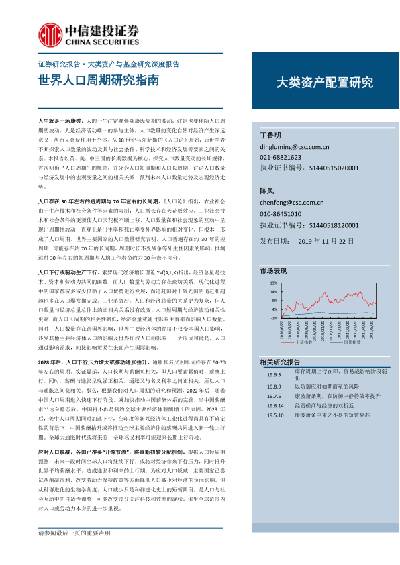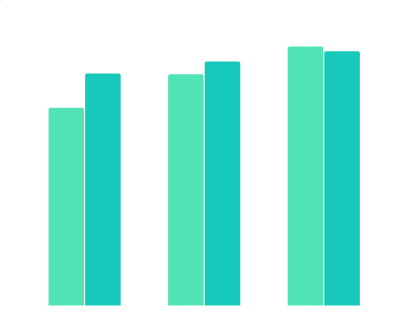"世界人口数据报告"相关数据
更新时间:2024-11-222019年世界人口展望
Understanding global population trends and anticipating the demographic changes to come are crucial to the achievement of the 2030Agenda for Sustainable Development. The 2030Agenda emphasizes that people are at the centre of sustainable development,echoing the ideals set forth in the Programme of Action of the International Conference on Population and Development adopted in Cairo in 1994.Population trends observed over the past few decades point to substantial progress made towards several of the Sustainable Development Goals (SDGs) so far.Examples include reduced mortality,particularly among children,as well as increased access to sexual and reproductive health care and enhanced gender equality that have empowered women to decide freely and responsibly the number,spacing and timing of their children.
Recent demographic trends are harbingers of the future challenges to sustainable development. For example,countries experiencing rapid population growth,most of which are in sub-Saharan Africa,must provide schooling and health care to growing numbers of children,and ensure education and employment opportunities to increasing numbers of youth. Countries where population growth has slowed or stopped must prepare for an increasing proportion of older persons and, in some cases,decreasing population size. These and other challenges can be addressed in part by anticipating coming demographic trends and incorporating that information into policies and planning.
The United Nations population estimates and projections form a comprehensive set of demographic data to assess population trends at the global, regional and national levels. They are used in the calculation of many of the key development indicators commonly used by the United Nations system,including for more than one third of the indicators used to monitor progress towards the achievement of the sDGs. The 2019 revision of the World Population Prospects is the twenty-sixth edition of the United Nations population estimate sand projections,which have been prepared since1951 by the Population Division of the Department of Economic and Social Affairs.The 2019 revision presents population estimates from 1950 until the present for 235 countries or areas, which have been developed through country-specific analyses of historical demographic trends. It builds on previous revisions by incorporating additional results from the 2010 and 2020 rounds of national population censuses as well as information from vital registration and recent nationally representative household surveys.The 2019 revision also presents population projections to the year 2100 that reflect a range of plausible outcomes at the global, regional and country levels.
【更多详情,请下载:2019年世界人口展望】

 2019年世界人口展望联合国从1951年开始定期对全世界的人口趋势进行分析。近期在纽约总部发布的2019年《世界人口展望》报告根据对全世界235个国家或地区的历史数据和人口趋势分析,进行了最新的人口估计。2019年发布时间:2020-04-24
2019年世界人口展望联合国从1951年开始定期对全世界的人口趋势进行分析。近期在纽约总部发布的2019年《世界人口展望》报告根据对全世界235个国家或地区的历史数据和人口趋势分析,进行了最新的人口估计。2019年发布时间:2020-04-24 2022世界人口形势报告2022年发布时间:2022-08-10
2022世界人口形势报告2022年发布时间:2022-08-10 公元前1万年-2021年世界人口数量该统计数据包含了公元前1万年-2021年世界人口数量。2021年全球的人口数量已经接近79亿人。2021年发布时间:2022-06-06
公元前1万年-2021年世界人口数量该统计数据包含了公元前1万年-2021年世界人口数量。2021年全球的人口数量已经接近79亿人。2021年发布时间:2022-06-06 截至2006年世界人口贩运被害人类型该统计数据包含了截至2006年世界人口贩运被害人类型。女性占比高达79%,其中妇女占66%,女孩占13%。2006年发布时间:2020-08-31
截至2006年世界人口贩运被害人类型该统计数据包含了截至2006年世界人口贩运被害人类型。女性占比高达79%,其中妇女占66%,女孩占13%。2006年发布时间:2020-08-31 1990-2100E世界人口总数增长情况该统计数据包含了1990-2100E世界人口总数增长情况。预计世界人口在未来15年内将增加超过10亿,到2030年将达到85亿,之后人口将继续增长,于2050年达到97亿,到2100年达到112亿。1990-2100年发布时间:2020-07-03
1990-2100E世界人口总数增长情况该统计数据包含了1990-2100E世界人口总数增长情况。预计世界人口在未来15年内将增加超过10亿,到2030年将达到85亿,之后人口将继续增长,于2050年达到97亿,到2100年达到112亿。1990-2100年发布时间:2020-07-03 截至2020年4月世界人口排名Top10该统计数据包含了截至2020年4月世界人口排名Top10。中国人口数量为1400050000人,名列第一位。2020年发布时间:2020-06-04
截至2020年4月世界人口排名Top10该统计数据包含了截至2020年4月世界人口排名Top10。中国人口数量为1400050000人,名列第一位。2020年发布时间:2020-06-04 大类资产配置研究:世界人口周期研究指南2019年发布时间:2020-01-08
大类资产配置研究:世界人口周期研究指南2019年发布时间:2020-01-08 2020年世界人口状况-反对伤害妇女和女孩并破坏平等的做法本报告描述了对于妇女和儿童的各种侵害,虽然有害做法可能差别很大,但都是对妇女和女孩权利的侵犯。到2020年初,世界面临一场前所未有的大流行,COVID-19在全球肆虐,夺走生命,对社会和经济造成严重破坏。在这个困难时刻,人口基金将继续在我们工作的国家和社区保护妇女和女孩的健康和权利。2020年发布时间:2020-07-03
2020年世界人口状况-反对伤害妇女和女孩并破坏平等的做法本报告描述了对于妇女和儿童的各种侵害,虽然有害做法可能差别很大,但都是对妇女和女孩权利的侵犯。到2020年初,世界面临一场前所未有的大流行,COVID-19在全球肆虐,夺走生命,对社会和经济造成严重破坏。在这个困难时刻,人口基金将继续在我们工作的国家和社区保护妇女和女孩的健康和权利。2020年发布时间:2020-07-03 2000年-2017年中国流动人口数量该统计数据包含了2000年-2017年全国流动人口数量。流动人口数量在2014年达到顶峰之后保持基本稳定。2000-2017年发布时间:2020-05-19
2000年-2017年中国流动人口数量该统计数据包含了2000年-2017年全国流动人口数量。流动人口数量在2014年达到顶峰之后保持基本稳定。2000-2017年发布时间:2020-05-19 1950-2015年全球241个国家和地区总人口数各个年龄段的年度总人口(两性合计)。1950-2015年发布时间:2020-07-01
1950-2015年全球241个国家和地区总人口数各个年龄段的年度总人口(两性合计)。1950-2015年发布时间:2020-07-01 2015-2100年全球242个国家和地区5岁以下的人口数人口数据基于2015年至2100年联合国中型预测(2017年版)2015-2100年发布时间:2020-07-21
2015-2100年全球242个国家和地区5岁以下的人口数人口数据基于2015年至2100年联合国中型预测(2017年版)2015-2100年发布时间:2020-07-21 1963-2016年中国与世界人均预期寿命历史变化情况该数据包含了1963-2016年中国与世界人均预期寿命历史变化情况。2016中国预期寿命(岁)为76.3岁,世界预期寿命(岁)为72.0岁。1963-2016年发布时间:2019-07-11
1963-2016年中国与世界人均预期寿命历史变化情况该数据包含了1963-2016年中国与世界人均预期寿命历史变化情况。2016中国预期寿命(岁)为76.3岁,世界预期寿命(岁)为72.0岁。1963-2016年发布时间:2019-07-11 1950-2015年全球241个国家和地区人口数量的变化年度人口统计指标。1950-2015年发布时间:2020-07-01
1950-2015年全球241个国家和地区人口数量的变化年度人口统计指标。1950-2015年发布时间:2020-07-01 1950-2015年全球241个国家和地区女性总人口数按年龄分的年度人口-女性。截至当年7月1日的实际人口按单身年龄分类(0、1、2,...,99、100+)。数据以千为单位。1950-2015年发布时间:2020-07-01
1950-2015年全球241个国家和地区女性总人口数按年龄分的年度人口-女性。截至当年7月1日的实际人口按单身年龄分类(0、1、2,...,99、100+)。数据以千为单位。1950-2015年发布时间:2020-07-01 1950-2015年全球241个国家和地区男性总人口数按年龄分的年度人口-男性。截至当年7月1日的实际人口按单身年龄分类(0、1、2,...,99、100+)。数据以千为单位。1950-2015年发布时间:2020-07-01
1950-2015年全球241个国家和地区男性总人口数按年龄分的年度人口-男性。截至当年7月1日的实际人口按单身年龄分类(0、1、2,...,99、100+)。数据以千为单位。1950-2015年发布时间:2020-07-01 2000年到2017年中国流动人口及农民工数量该统计数据包含了2000年到2017年全国流动人口及农民工数量。2014年后流动人口数量缓慢减少,农民工数量继续增加。2000-2017年发布时间:2020-08-07
2000年到2017年中国流动人口及农民工数量该统计数据包含了2000年到2017年全国流动人口及农民工数量。2014年后流动人口数量缓慢减少,农民工数量继续增加。2000-2017年发布时间:2020-08-07 2016年世界四大湾区人口数占全国人口数的比重情况本数据记录了2016年世界四大湾区人口数占全国人口数的比重情况,其中旧金山湾区占比2%。2016年发布时间:2019-11-29
2016年世界四大湾区人口数占全国人口数的比重情况本数据记录了2016年世界四大湾区人口数占全国人口数的比重情况,其中旧金山湾区占比2%。2016年发布时间:2019-11-29 1500-2000年全球190个国家世界各个国家人口数量原始数据发布的单位为千人,本数据在原始数据上已乘以10001500-2000年发布时间:2020-07-13
1500-2000年全球190个国家世界各个国家人口数量原始数据发布的单位为千人,本数据在原始数据上已乘以10001500-2000年发布时间:2020-07-13 2015-2100年全球242个国家和地区按联合国中位数预测的25-64岁人口数2017年版的人口数据基于2015年至2100年的联合国中位数预测。2015-2100年发布时间:2020-06-09
2015-2100年全球242个国家和地区按联合国中位数预测的25-64岁人口数2017年版的人口数据基于2015年至2100年的联合国中位数预测。2015-2100年发布时间:2020-06-09 重返世界:2023年旅游大数据报告2023年发布时间:2023-12-22
重返世界:2023年旅游大数据报告2023年发布时间:2023-12-22





